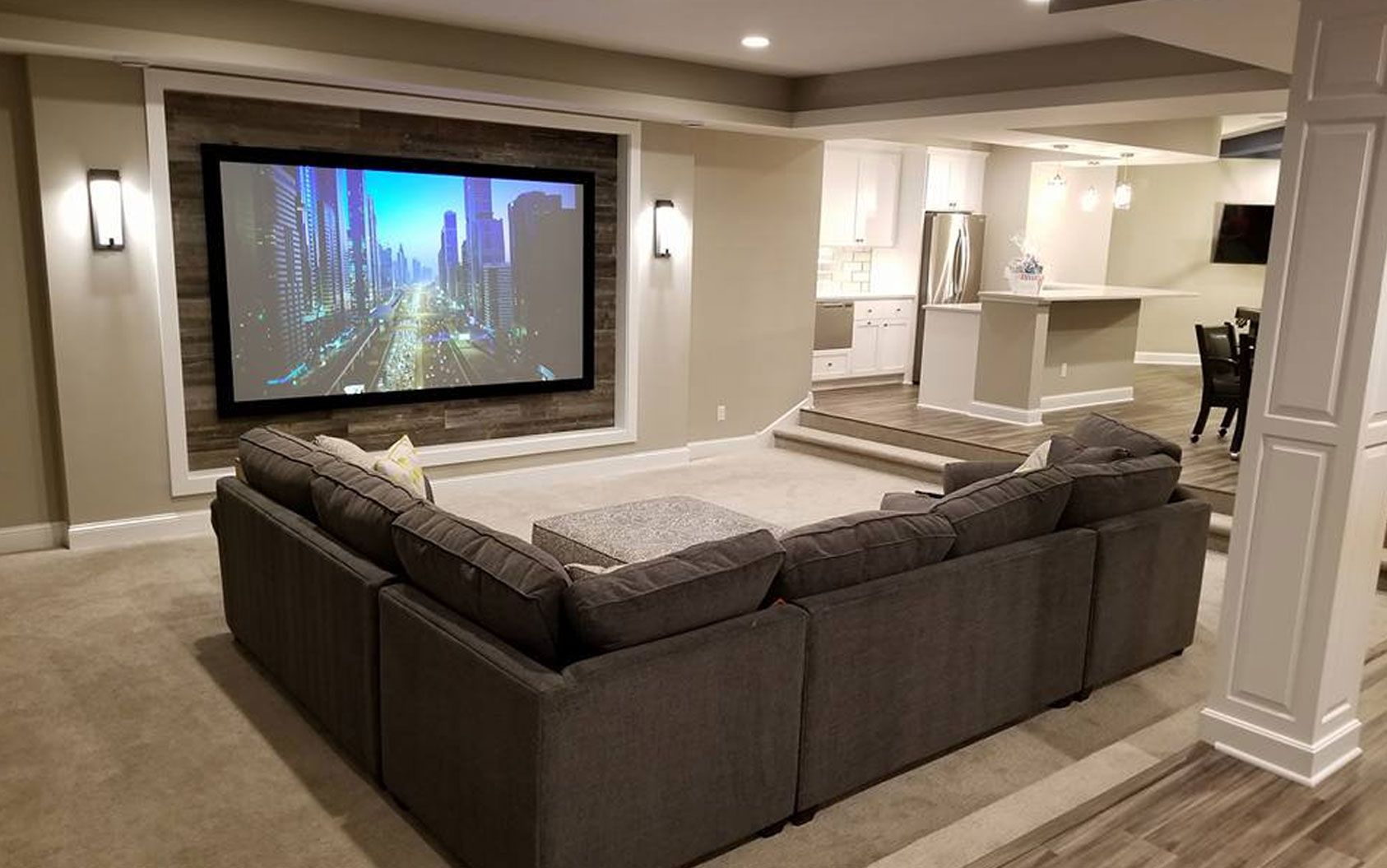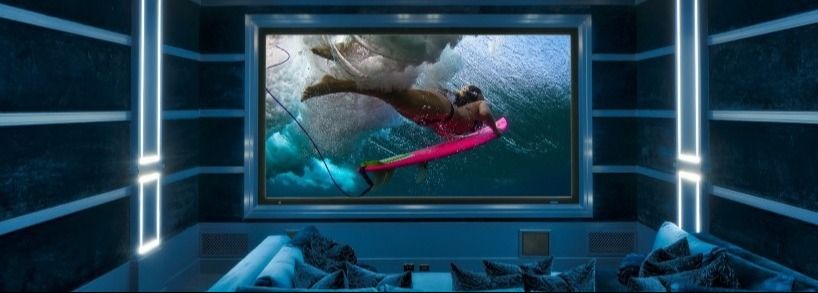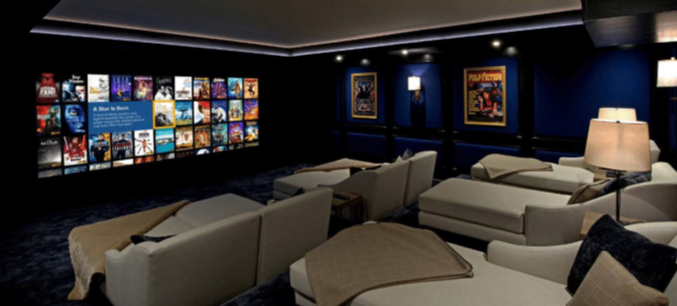
AN EXPLORATION OF THE MOVIE SOUNDTRACK
Let’s face it, enjoying a movie is all about being immersed in the sounds and images of the story being told, as if you are actually a part of the action. Modern technology makes this possible in a way that no one could have imagined even 20 years ago......
Step back much further in time, to the year 1888, and we find that the first moving picture technology was invented at the Edison Laboratory. Thomas Edison commissioned his faithful lab assistant, William Dickson, to invent the first motion picture camera, naming it the kinetograph. At that time, Edison was not concerned with an additional technology to provide sound with the video, because he planned to use his recent invention, the phonograph, to fulfill that role. In fact, he also commissioned Mr. Dickson to invent the kinetophone, a device that successfully synchronized the phonograph with the kinetograph. Over 250 kinetophones were manufactured and marketed by the Edison Company in the 1890’s and were distributed all over the world.
Concurrently with the invention of the kinetophone, Edison also commissioned Mr. Dickson to invent an individual viewing device for the public called the kinetoscope, which provided the public with a way to view short film clips, although without audio. First demonstrated in 1893, the public immediately fell in love with it. It was such a novel invention that people didn’t care that there was no audio to accompany the “living pictures,” and by 1894, public viewing parlors were established around the world.
For most of us today who are entranced with modern movie technology, it is unfathomable that someone could be excited about going to a viewing parlor to watch a very short clip of commonplace activities of everyday life, such as animals playing or soldiers marching, and with no sound to boot!
THE MOVE TO PROJECTORS
The next step in movie technology after the kinetoscope was the move to the use of projectors in order to provide a way to show films to large audiences. Building on technologies developed by the Edison Company, the Lumiere brothers of France invented the Cinematographe, which was a camera, a projector, and a film printer all in one. It had no sound capability, of course, but nonetheless, the crowd loved it during the first-ever showing of a projected movie to a paying audience in December 1895 in Paris, France.
Meanwhile, Edison bought the rights to a similar projector technology invented by Thomas Armat, called the Vitascope. He used it to present the first showing of a projected movie to an audience in the United States in 1896 at the Koster and Bial’s Music Hall in New York City. Not to be outdone by the Lumiere brothers, he opted for a precedent-setting addition to the event – a live orchestra performance alongside the movie, effectively drowning out the loud whir of the projector.
ADDING SOUND
From that point forward, the movie industry grew by leaps and bounds. It rapidly moved through the age of “silent movies,” which were in fact always accompanied in theaters by either a single musician performing live improv, or by an entire orchestra performing scores according to a cue sheet. Released in 1926, Don Juan was the first movie with imbedded sound, in the form of a musical score only.
The Jazz Singer was released in 1927 and proved to be a groundbreaking film. Al Jolson’s spontaneous speech was recorded along with the intended popular songs and orchestral score, and the audience loved it. Prior to that, it was the opinion of the major movie studios that audiences wouldn’t care to hear dialogue! How crazy was that?
By May 1928, virtually every studio in Hollywood was licensed to use Western Electric’s Movietone sound-on-film recording system. It was now a different world for those studios, which subsequently had to concentrate on recording high-quality sound during production.
Working in the shadows of live-to-recorded productions of the time, cartoonists were working feverishly to animate their works. None of them were especially remarkable until a gentleman named Walt Disney made a historical decision that would pull him away from the edge of bankruptcy. Impressed by the astounding success of The Jazz Singer, he decided to give his fledgling cartoon character, Mickey Mouse, a voice.
Disney’s Steamboat Willie was one of the first cartoons imbedded with synchronized sound and became a landmark in the history of animation when it premiered at New York’s Colony Theater on November 18,1928. The audience was so enthralled with the voice and personality of the rascally mouse that Disney was catapulted into instant success. Seizing on the opportunity of the moment, he rereleased it two weeks later at the largest theater in the world at that time, the Roxy, in New York.
Coming on the heels of Disney’s success, the next major shift in cinematic sound production came around 1930 with the invention of postsynchronization (also known as rerecording or dubbing), in which the audio and video are printed on separate pieces of film. This, of course, allowed video to be edited independently from the audio once again, as had been done prior to the use of sound-on-film systems. And it opened up an entirely new world of possibilities in sound and dialogue modification.
MODERN INNOVATIONS IN SOUND
A major shift happened in 1952 with the introduction of stereophonic sound, which uses two or more independent channels of information. In the early 1970s, quadraphonic sound systems became available, employing four independent channels of information.
Today’s gold standard, surround-sound, was actually in the development and experimentation stage in the 1930s and was first used commercially by Walt Disney for his groundbreaking film, Fantasia. Disney intended this film to be visually immersive for the audience, and he wanted a sound technology that would be similarly immersive. His sound engineers invented a version of surround sound that was named Fantasound, ensuring the success of the movie. However, its use quickly died out due to the prohibitive expense to theaters for the 54 speakers required.
Surround sound technology was revived, however, in 1975 with the invention of Dolby Stereo, which led to a further upgrade to Dolby Surround technology in 1982. This innovative change consisted of a right channel, a left channel, and a surround channel, intended for home use. The surround channel could also be sent to two rear speakers, providing an immersive sound experience that was second only to the movie theaters of that time.
CREATING A MOVIE SOUNDTRACK
Fast-forward to today, and the possibilities for soundtrack manipulation are essentially endless. Sound engineers can alter and manipulate sound recordings made during the production phase of a movie to create an unbelievably engaging end product. They skillfully add, tweak, or polish these five elements of the soundtrack:
• Dialogue - the speech of the characters, which can be recorded either on the set or in a studio
• Foley - a type of sound effect, such as footsteps, that are added to be synchronized to the actions of the character(s), enhancing realism
• Sound effects - sounds such as aircraft flying overhead or bombs exploding that don’t correspond to the actions of the characters, but that enhance the scene by adding additional realism; they are produced in the sound studio and are not ambient to the setting
• Background sounds - ambient sounds related to the location or scene, such as birds chirping, water dripping, or traffic driving by
• Music - pre-existing musical scores as well as those produced specifically for the film
Without this modern ability to manipulate sound to create a unique soundtrack, some of our favorite movies such as Star Wars, Top Gun, and Pandora would not be the thrilling blockbusters that they turned out to be.
Dreaming of adding a surround sound system or home theater to your humble abode?
Call the professionals at AV Enthusiast at 256.882.5081 to schedule a personal consultation or drop by their showroom at 514 Madison Street in Huntsville Monday – Friday from 9 AM to 5 PM or Saturday from 10 AM to 3 PM.
We look forward to meeting you!

Elevate your family’s entertainment experience with an indoor or outdoor home theater!

Elevate your game day experience with ultimate Home Tech!

Ringing in the New Year with Innovation and Connection

The Ultimate Home Theater and Smart Family Room Guide

